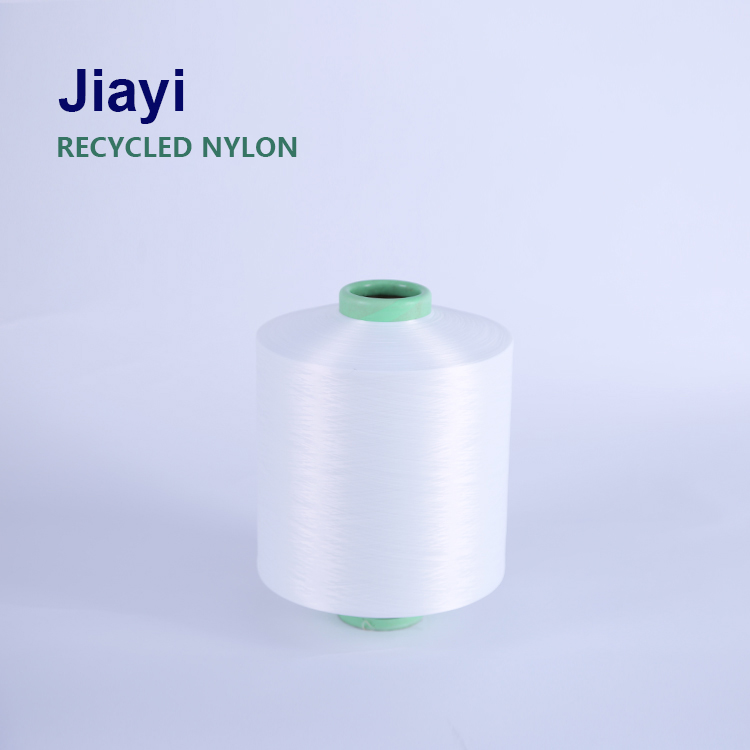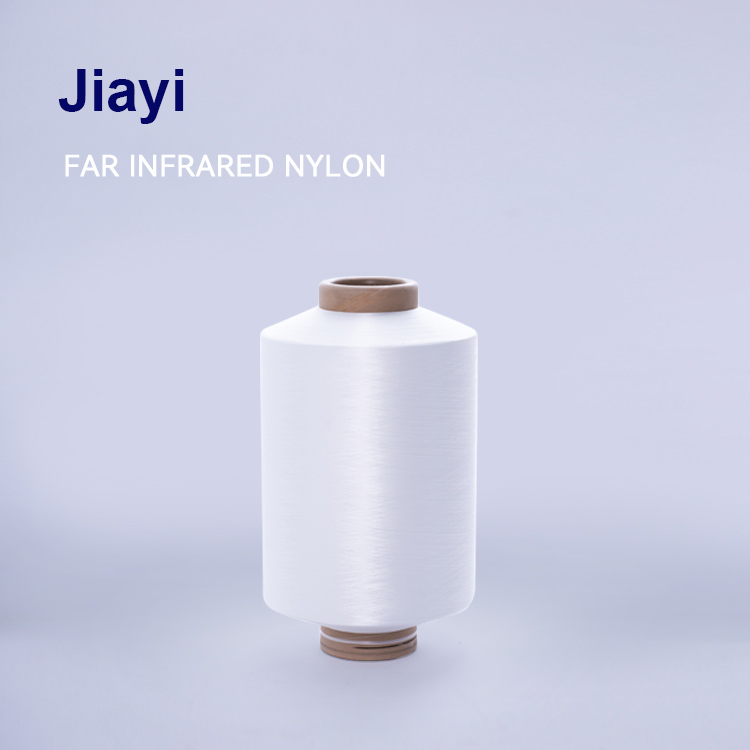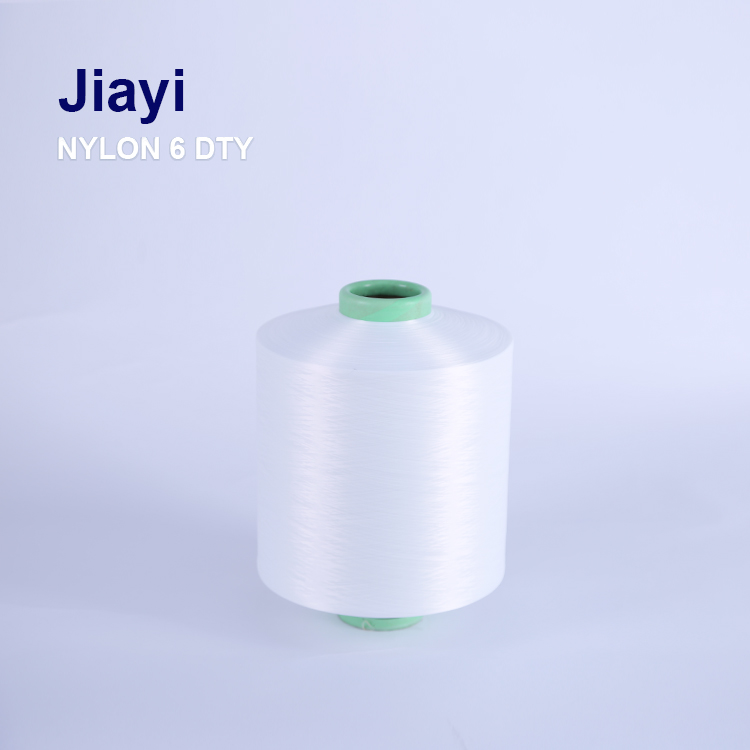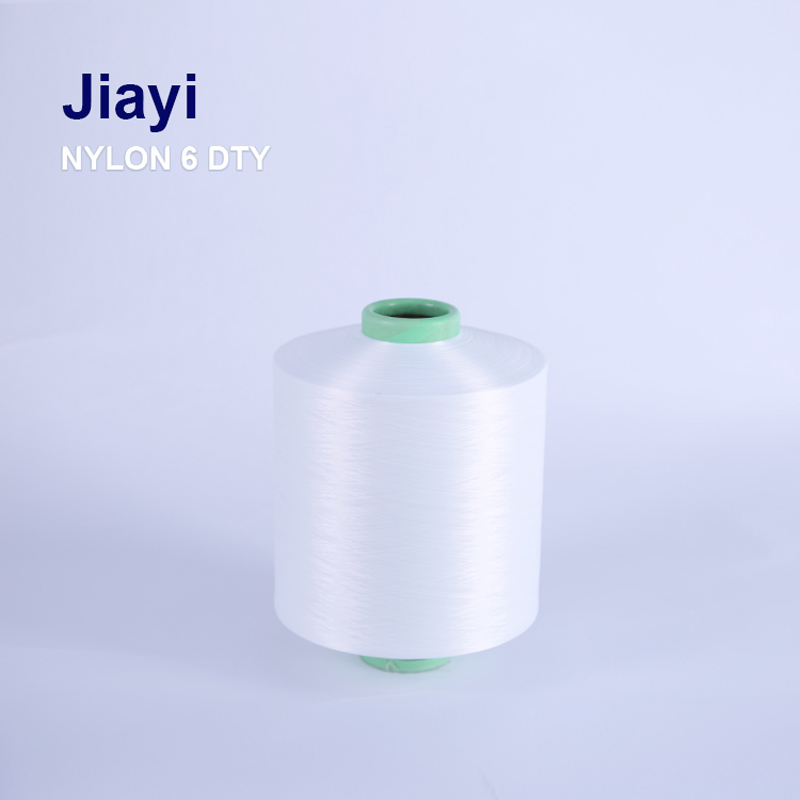Big discounting Biodegradable Filament For 3d Printer - Eco-friendly Recycled Nylon Yarn – JIAYI
Big discounting Biodegradable Filament For 3d Printer - Eco-friendly Recycled Nylon Yarn – JIAYI Detail:
What is recycled nylon yarn?
As we all know, nylon is a petroleum-based material and producing it causes a high cost in energy and greenhouse gases.
Incorporating as much recycled nylon as we can lessens our dependence on virgin petroleum as a raw material source, helps eliminate discarded material and reduces greenhouse gas emissions from manufacturing. Using recycled nylon also promotes new recycling streams for nylon products that are no longer functional.

Switching to preferable materials that have a more positive impact on people and the environment compared to conventional. It diverts waste from landfills and its production uses much fewer resources than virgin nylon (including water, energy and fossil fuel).Recycled nylon is considered a preferred alternative to virgin nylon and bio-based nylons (produced with renewable raw materials) potentially offer a promising alternative.
Where does it come from?
According to different origins, the recycled nylon chips are classified into two kinds:
Post-consumer Normallymaterials come from products like plastic bottles, fishing nets, worn-out clothes or discarded carpeting that have been bought, used in the world and then trashed.
Pre-consumer waste material, material diverted from the waste stream during the manufacturing process. Excluded is the reutilization of materials such as rework, regrind or scrap generated in a process and capable of being reclaimed within the same process that generated it, which comes from industrial processes, includes scraps of material in a factory that would have otherwise been down-graded or sent to a landfill.

Most of the nylon we use now comes from a mechanically recycled pre-consumer source. These materials would have gone into lesser-quality goods if we hadn’t used them in our products.
Recycling nylon is still more expensive than new nylon, but it has many environmental advantages. It is estimated to be the main stream in textile.
A lot of research is currently being conducted to improve the quality and reduce the costs of the recycling process.
Applications
It can be commonly used to make clothing, backpacks and bags, stockings or tights, outdoor gear such as tents, rope, carpet and many other items we use every day. For our recycled nylon yarn, it can be used as virgin nylon in textile field.
Questions you may be interested
1. What is Jiayi’s recycled nylon made of?
Jiayi’s Recycled nylon is usually extruded from pre-consumer nylon chips.
2. Why is nylon not sustainable?
Nylon and polyester are made from petrochemicals, these synthetics are non-biodegradable as well, so they are inherently unsustainable on two counts. Nylon manufacture creates nitrous oxide, a greenhouse gas 310 times more potent than carbon dioxide.
3. Does nylon degrade?
Discarded fabric takes 30–40 years to decompose
4. Does there any difference between raw nylon and recycle nylon?
Recycled nylon is returned back to its original quality, the fabric created has all the properties of nylon. This calls for a garment that is sweat-wicking, breathable, quick-drying, and most notably, durable.
5. Is recycled nylon safe to wear?
In short: yes, it’s safe to wear clothing, even underwear, made from post-consumer plastic water bottles.
Product detail pictures:

Related Product Guide:
With our leading technology at the same time as our spirit of innovation,mutual cooperation, benefits and advancement, we will build a prosperous future with each other with your esteemed firm for Big discounting Biodegradable Filament For 3d Printer - Eco-friendly Recycled Nylon Yarn – JIAYI , The product will supply to all over the world, such as: Pretoria, British, Slovakia, Our company will continue to adhere to the " superior quality, reputable, the user first " principle wholeheartedly. We warmly welcome friends from all walks of life to visit and give guidance, work together and create a brilliant future!
High Quality, High Efficiency, Creative and Integrity, worth having long-term cooperation! Looking forward to the future cooperation!
Related PRODUCTS
-

E-mail
-

Whatsapp
-

WeChat
Judy

-

Top




